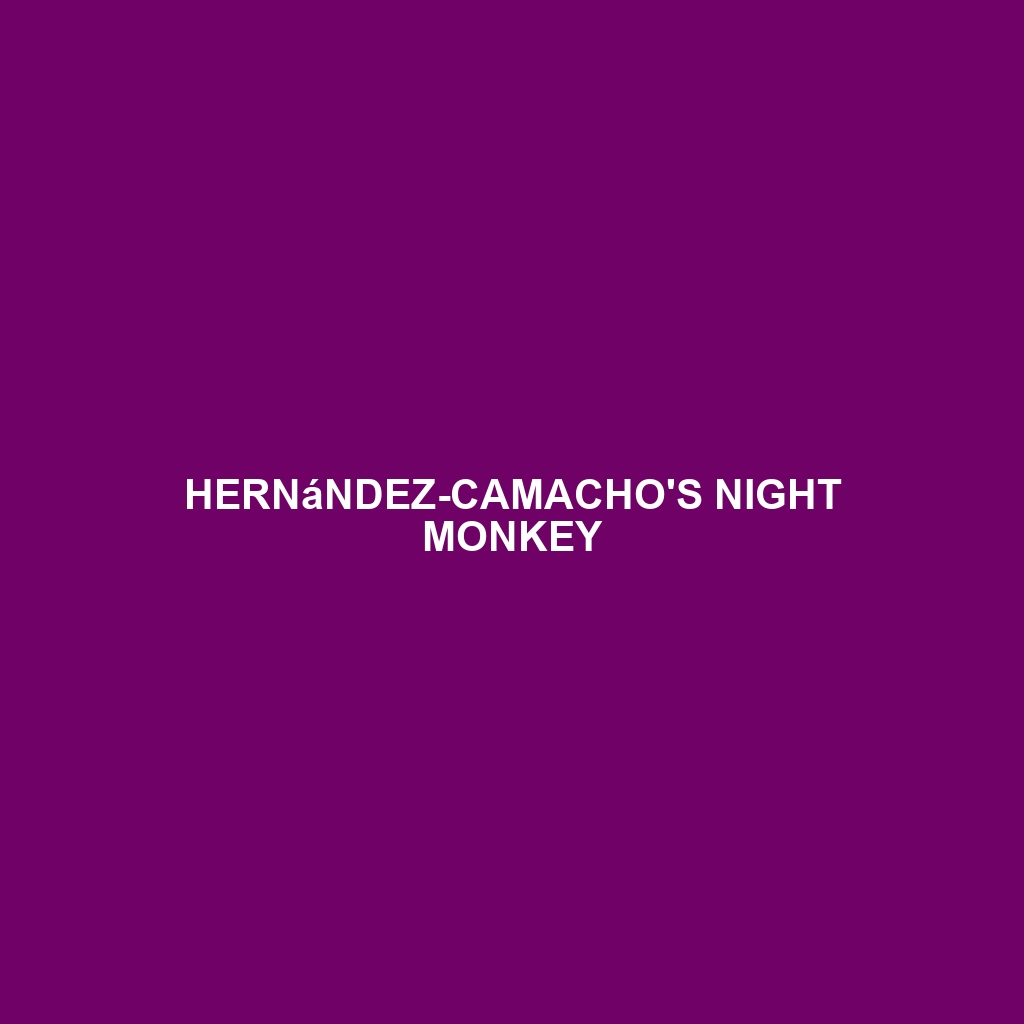Hernández-Camacho’s Night Monkey: A Detailed Description
Hernández-Camacho’s Night Monkey (Aotus jorgehernandezi) is a captivating and elusive primate species endemic to the tropical rainforests of Colombia. This nocturnal creature is known for its large, expressive eyes adapted for nighttime vision, and its distinctive vocalizations that pierce the silence of the night. Named in honor of the Colombian biologist Jorge Hernández-Camacho, this night monkey plays a crucial role in the biodiversity of its ecosystem.
Physical Characteristics
Size and Weight:
Adult Hernández-Camacho’s Night Monkeys typically weigh between 800 grams to 1.2 kilograms (1.8 to 2.6 pounds).
They range in body length from 24 to 37 centimeters (9.4 to 14.6 inches), with tails that can measure up to 40 centimeters (15.7 inches).
Coloration:
Their fur is predominantly grayish-brown or reddish-brown with lighter underparts.
They have a distinctive facial pattern with a pale white or cream-colored mask around their eyes, which enhances their nocturnal vision.
Their large, round eyes are dark brown or black, adapted for low-light conditions.
Special Features:
Unlike many primates, Hernández-Camacho’s Night Monkeys lack a prehensile tail but use it for balance as they navigate through the trees.
They have a highly developed sense of hearing and smell, aiding them in nocturnal foraging.
Behaviors
Social Interactions:
These night monkeys are monogamous, forming long-term pair bonds.
They live in small family groups typically consisting of a breeding pair and their offspring.
Communication within the group includes a variety of vocalizations, such as soft whistles, hoots, and high-pitched screams, especially during territorial disputes.
Feeding Habits:
Hernández-Camacho’s Night Monkeys are primarily frugivorous but have a varied diet that includes leaves, flowers, insects, and small vertebrates.
They spend their nights foraging in the forest canopy, using their keen senses to locate food.
Ecological Roles:
As seed dispersers, these monkeys play a critical role in maintaining the health and diversity of their forest ecosystem.
Their diet helps control insect populations, contributing to the ecological balance.
Habitats and Adaptations
Habitats:
They inhabit tropical rainforests, including both primary and secondary forests.
They prefer dense, high-canopy areas that provide ample cover and food resources.
Adaptations:
Nocturnal habits help them avoid diurnal predators and reduce competition for food.
Their large eyes and enhanced night vision allow them to navigate and forage efficiently in low-light conditions.
They have strong limbs and dexterous hands for climbing and grasping branches.
Conservation Status
Currently, Hernández-Camacho’s Night Monkey is classified as Vulnerable by the International Union for Conservation of Nature (IUCN).
The primary threats to their survival include habitat destruction due to logging, agriculture, and human encroachment.
Conservation efforts are focused on habitat preservation and environmental education to promote coexistence with local human populations.
Fun Facts
Despite being called “night monkeys,” they are also known as “owl monkeys” because of their striking resemblance to owls in both appearance and nocturnal habits.
Unlike many other primates, Hernández-Camacho’s Night Monkeys do not have color vision; their eyes are adapted to detect light and movement in the dark.
They have a unique way of grooming one another using their teeth to comb through each other’s fur, which helps maintain social bonds within the group.
Hernández-Camacho’s Night Monkey is a remarkable and integral part of the tropical rainforest ecosystem. Understanding and protecting this species is vital for the health of their natural habitat and the biodiversity it supports.
